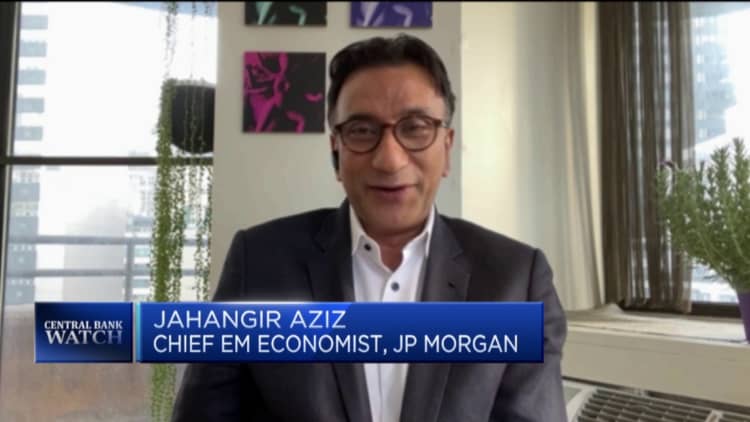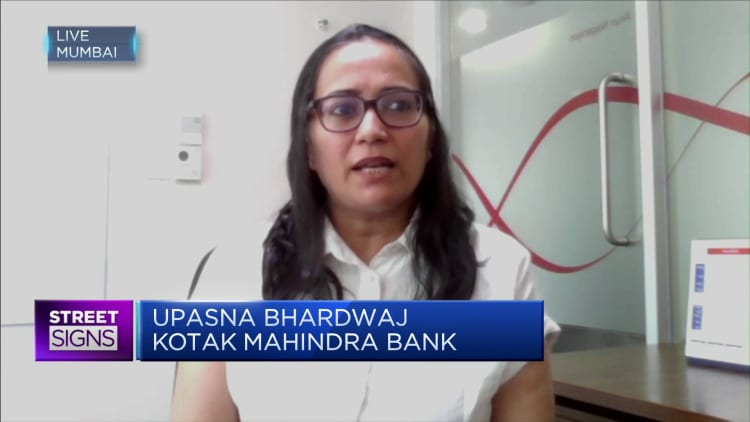
India will need to make a "growth sacrifice" to contain inflation, a JPMorgan economist told CNBC on Thursday.
On Wednesday, the Reserve Bank of India raised the repo rate, or the rate at which banks borrow from the central bank, by a sizable 50 basis points to 4.9 %. The move continues the RBI's reversal of accommodative policies designed to spur growth. Still, the central bank left its growth target unchanged at 7.2%.
"There is inflation, but not that cap to the growth target. That's a very strange combination. How on earth are you going to bring down inflation without bringing down growth? I think [a] growth sacrifice has to be done," Jahangir Aziz, chief emerging markets economist at JPMorgan, said on CNBC's "Squawk Box Asia."
Inflation has been trending higher, forcing the central bank to raise interest rates faster and higher than it previously anticipated. In April, surging food and fuel prices took India's retail inflation to an eight-year high of 7.79%.
"The upside risks to inflation … have materialized earlier than anticipated, both in terms of timing and magnitude," RBI Governor Shaktikanta Das said Wednesday, signaling the central bank will likely continue to unwind accommodative policies.
Tough choices ahead
Aziz said the central bank has room to raise rates by another 25 basis points after Wednesday's decision, since the RBI slashed rates by 75 basis points during the pandemic. From that point on, however, things would get more difficult.
"The question is: what happens after that [if] inflation will continue to move ahead," Aziz said. "If growth slows down quite a bit at that point in time, does the RBI pause or does the RBI deliver what the market is looking for?"
The JPMorgan economist also said these tough choices would emerge probably closer to November or December.

It is "absolutely imperative" that the RBI's actions are "front loaded," according to Upasna Bhardwaj, chief economist at Kotak Mahindra Bank. Bhardwaj said rate hikes would only pause if inflation falls below 6% by the last quarter of the financial year.
"Of course, the situation is evolving because the crude oil price trajectory is very important for Indian inflation. [With that in mind] I expect to see a repo rate range of 5.75% to 6% by the end of this financial year. But the effective policy rate will be higher by 25 basis points," she said.
Noting the central bank has raised the rate by 90 basis over the past month, Bhardwaj said it has taken a hawkish approach with other policies.
"We don't believe that there's going to be a very aggressive continued rate hike cycle going ahead, but at least the front-loaded actions is absolutely imperative," Bhardwaj said. Rate hikes would also have an impact on consumer demand.
While she estimated rates would hit 5.75% by the end of the financial year, she took a different view from the JPMorgan economist and forecast growth slightly above the central bank's at 7.3%.
"We are looking at GDP growth of 7.3% for now, with some impact coming on demand towards the end of the year," Bhardwaj said.
The central bank's own survey on macroeconomic indicators conducted between May 13 and June 3 estimated that the repo rate could hit 6% by the end of the financial year.

